同步操作将从 FlameAI/SIGer 强制同步,此操作会覆盖自 Fork 仓库以来所做的任何修改,且无法恢复!!!
确定后同步将在后台操作,完成时将刷新页面,请耐心等待。
【笔记】血氧仪电路设计12&拆解,以及智能手表相应功能解析!
EE-CHINA TI 德州仪器:
本期再次以笔记体呈现,展示了学习过程和收获。并再次感谢唐老师的分享,获得了诸多学习线索,包括前面的TI分享。本期学习又更近了一步,将唐老师分享的源头素材作了进一步调研,以至于没能对唐老师的视频教学作进一步的进度,只能概要如下:
他的四期视频是递进的,最新的一期更聚焦,目标更清晰,DIY一个国产化100%的血氧仪方案,并作了器件选择,电路分析等工作。在春节前首次调研时没有详细聆听他的课,当时的第一课就对血氧仪的原理做了详实的讲解。也是本期视频的起点,现在四期内容下来,反复强调他的结论,更加坚信了 DIY血氧仪 的信心,期待早日能将作品分享给唐老师看。
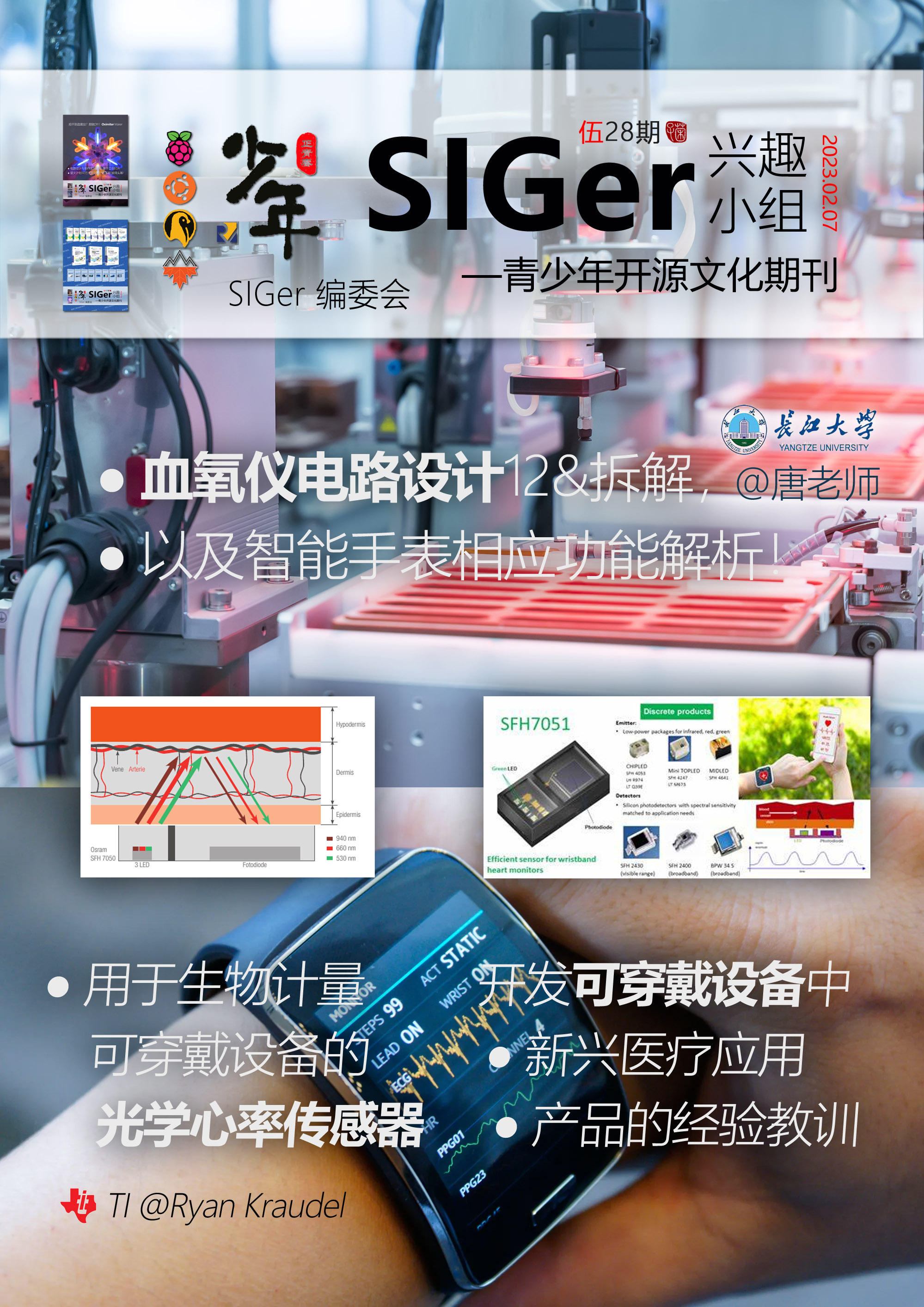
2023年2月7日 17:40
唐老师,您好, 网页链接 能否转载您的血氧仪原理视频的字幕和PPT,SIGer 青少年开源文化期刊 https://gitee.com/flame-ai/siger ,开年做了一个相关选题,您的这篇讲的非常详实。 网页链接 才发现您的宝藏B站,我和同学们一起认真学习研究下,做一个专题推荐您的课程。如果您有时间,能解答同学们的问题就更完美了。祝老师工作顺利,身体健康,阖家欢乐!
2023年2月7日 17:45
可以,但是我这个PPT都是网上找的资料,我直接把PPT给你,你自己修修改改,也不需要说是我做的
2023年2月7日 17:45
这里面就是PPT格式的文档,授权给你自由修改,也不需要提到是我做的这个哈哈

































































































































































































































血氧仪电路设计,血氧饱和度测量原理 芯海科技血氧仪方案、鱼跃医疗血氧仪拆解,脉搏手指夹式家用脉氧血氧饱和度检测医用指尖血氧仪血氧仪手指夹式血氧饱和度检测仪家用
https://www.bilibili.com/video/BV1TP411F7Ap/
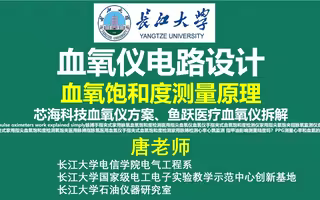
血氧仪电路设计 血氧饱和度测量原理 芯海科技血氧仪方案、鱼跃医疗血氧仪拆解 How pulse oximeters work explained simply脉搏手指夹式家用脉氧血氧饱和度检测医用指尖血氧仪血氧仪手指夹式血氧饱和度检测仪家用指尖氧饱夹指脉氧监测仪血氧仪手指夹式家用指尖血氧饱和度检测氧饱夹医用脉搏指脉氧医用血氧仪手指夹式血氧饱和度检测家用脉搏检测心率心跳监测 指甲油影响测量精度吗?PPG测量心率和血氧的方法 用于检测血氧饱和度、判定新冠重症与否的家用医疗监测工具——血氧仪的关注度持续提升。血
4843 | 9 | 1-7
血氧仪电路设计2血氧饱和度测量工作原理 MICROCHIP血氧仪方案、鱼跃医疗血氧仪方案脉搏手指夹式家用脉氧血氧饱和度检测医用指尖血氧仪血氧仪手指夹式血氧饱和度
https://www.bilibili.com/video/BV1Vg411s7rj/
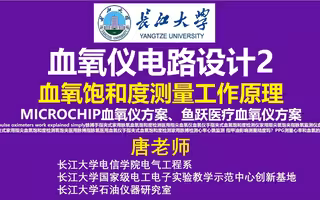
血氧仪电路设计2 血氧饱和度测量工作原理 MICROCHIP血氧仪方案、鱼跃医疗血氧仪方案 How pulse oximeters work explained simply脉搏手指夹式家用脉氧血氧饱和度检测医用指尖血氧仪血氧仪手指夹式血氧饱和度检测仪家用指尖氧饱夹指脉氧监测仪血氧仪手指夹式家用指尖血氧饱和度检测氧饱夹医用脉搏指脉氧医用血氧仪手指夹式血氧饱和度检测家用脉搏检测心率心跳监测 指甲油影响测量精度吗?PPG测量心率和血氧的方法 用于检测血氧饱和度、判定新冠重症与否的家用医疗监测工具——血氧仪的关
1487 | 0 | 1-8
血氧仪拆解,鱼跃医疗YX102 YX303 YX306拆解 康泰CMS50D 血氧仪电路设计血氧饱和度测量原理,芯海科技血氧仪方案、脉搏手指夹式家用脉氧血氧饱
https://www.bilibili.com/video/BV1n14y1u7sM/
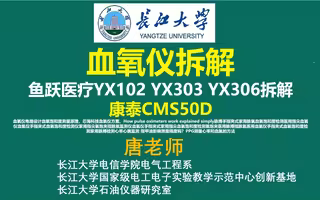
血氧仪拆解 鱼跃医疗YX102 YX303 YX306拆解 康泰CMS50D 血氧仪电路设计血氧饱和度测量原理,芯海科技血氧仪方案、How pulse oximeters work explained simply脉搏手指夹式家用脉氧血氧饱和度检测医用指尖血氧仪血氧仪手指夹式血氧饱和度检测仪家用指尖氧饱夹指脉氧监测仪血氧仪手指夹式家用指尖血氧饱和度检测氧饱夹医用脉搏指脉氧医用血氧仪手指夹式血氧饱和度检测家用脉搏检测心率心跳监测 指甲油影响测量精度吗?PPG测量心率和血氧的方法 红框位置为润石(RUNIC
2326 | 1 | 1-11
用华为手表苹果手表给胡萝卜 火腿肠 土豆 测血氧 测心率,智能手表 智能手环核心技术 心率 脉率 血氧饱和度 运动心率检测电路 华为智能手表 苹果智能手表华为
https://www.bilibili.com/video/BV1vR4y127vg/
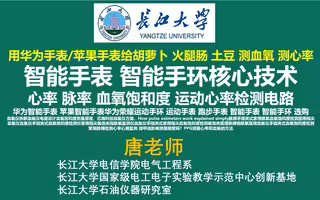
用华为手表/苹果手表给胡萝卜 火腿肠 土豆 测血氧 测心率 智能手表 智能手环核心技术 心率 脉率 血氧饱和度 运动心率检测电路 华为智能手表 苹果智能手表华为荣耀运动手环 运动手表 跑步手表 智能手表 智能手环 选购 血氧仪拆解血氧仪电路设计血氧饱和度测量原理,芯海科技血氧仪方案、How pulse oximeters work explained simply脉搏手指夹式家用脉氧血氧饱和度检测医用指尖血氧仪血氧仪手指夹式血氧饱和度检测仪家用指尖氧饱夹指脉氧监测仪血氧仪手指夹式家用指尖血氧饱和度检测氧饱
1958 | 9 | 1-12
https://www.bilibili.com/video/BV1TP411F7Ap/
血氧仪电路设计
血氧饱和度测量原理
芯海科技血氧仪方案、鱼跃医疗血氧仪拆解
How pulse oximeters work explained simply脉搏手指夹式家用脉氧血氧饱和度检测医用指尖血氧仪血氧仪手指夹式血氧饱和度检测仪家用指尖氧饱夹指脉氧监测仪血氧仪手指夹式家用指尖血氧饱和度检测氧饱夹医用脉搏指脉氧医用血氧仪手指夹式血氧饱和度检测家用脉搏检测心率心跳监测 指甲油影响测量精度吗?PPG测量心率和血氧的方法
用于检测血氧饱和度、判定新冠重症与否的家用医疗监测工具——血氧仪的关注度持续提升。血氧仪和额温枪一样,未来都会成为居民健康生活必备利器,今天,我们分享一下本土健康产业领军企业芯海科技在血氧仪领域的布局,其实早在2020年新冠爆发之初,芯海科技就凭借高精度ADC和MCU产品推出了高精准高可靠性额温枪,血氧仪产品,如今,芯海科技根据用户需求,在血氧仪产品领域深度布局,推出了全系列方案。血氧仪工作原理在人体正常血液中存在四种血红蛋白:氧合血红蛋白(HbO2)、还原血红蛋白(Hb)、碳氧血红蛋白(CoHb)、高铁血红蛋白(MetHb)。其中还原血红蛋白与氧气做可逆性结合,碳氧血红蛋白、高铁血红蛋白与氧气不结合。血氧饱和度指的是血液中氧合血红蛋白容量占可结合氧气的血红蛋白容量的百分比。图1 PPG测量SpO2示意图如图1所示Hb和HbO2这 两种血红蛋白对红光和红外光的吸收特性表现不一样。通过获取红光和红外的PPG信号,根据Lambert-Beer定律,结合图2的血红蛋白含量和吸光系数以及PPG信号AC和DC成分的关系求解方程,可以得到SpO2的值。从脉搏血氧SpO2的原理可以知道,要准确计算SpO2的值,关键是获取准确的PPG信号,也就是准确的IAC和IDC。血氧探头是由两只发光管和一只电光管组成。其中一只发光管发出波长为660nm的可见红光,另外一只发光管发出波长为920nm950nm之间的不可见红外光。按照所使用的传感器采样方式的不同,可以分为透射式和反射式两种。从脉搏血氧SpO2的原理可以知道,要准确计算SpO2的值,关键是获取准确的PPG信号,也就是准确的IAC和IDC。血氧探头是由两只发光管和一只电光管组成。其中一只发光管发出波长为660nm的可见红光,另外一只发光管发出波长为920nm950nm (红光波长660nm,红外光波长880nm、905nm、910nm或940nm)之间的不可见红外光。按照所使用的传感器采样方式的不同,可以分为透射式和反射式两种。因为氧合血红蛋白和还原血红蛋白在可见光和接近红外线的频谱范围内具有不同的吸收特性。还原血红蛋白吸收较多的红色频率光线,吸收较少的红外频率光线;而氧合血红蛋白吸收较少的红色频率光线,吸收较多的红外频率光线。利用红光和红外交替照射手指,接收端的光电二极管会产生一个跟随脉搏变化的微弱光电流,把光电流转换、滤波、放大后得到脉搏波形,根据波峰间距得到脉搏频率,根据红光和红外的光电流比例得出血氧饱和度。国家有关部门印发的《新型冠状病毒肺炎诊疗方案》中指出,当指氧饱和度(从手指上测量的血氧饱和度)低于93%(健康者在98%左右)即为重症患者,需及时就医。因此,家中常备实时检测血氧状况的指夹式血氧仪,有助于人们科学防疫。一般血氧仪分指夹式和穿戴式,指夹式是通过指端进行测量,穿戴式则通过人体佩戴的穿戴产品如手表手环等进行测量,原理相同。
指夹式脉搏血氧仪产品应用
血氧饱和度(SpO2)是血液中的血红蛋白和氧分子结合程度的指标,可体现身体的摄氧状况,在呼吸系统疾病治疗中,常被用于判断肺部功能恢复情况。
由国家有关部门印发的《新型冠状病毒肺炎诊疗方案》中指出,当指氧饱和度(从手指上测量的血氧饱和度)低于93%(健康者在98%左右)即为重症患者,需及时就医。因此,家中常备实时检测血氧状况的指夹式血氧仪,有助于人们科学防疫。 指夹式脉搏血氧仪是一种针对血氧饱和度的无创测量仪器,其血氧测量的工作原理是采用两束不同波长的光(红光波长660nm,红外光波长880nm、905nm、910nm或940nm)照射人体指端,由光敏组件获取测量信号。通过检测还原血红蛋白和氧合血红蛋白对两种不同波长光吸收的区别,测量数据之差就是测量血氧饱和度的基本数据。目前,芯海科技旗下CS32L010、CS32F030、CSU18P88等系列产品,能够提供更高精度、更强性能、更低功耗且成熟可靠更易开发的血氧仪应用方案。
CS32L010
https://www.bilibili.com/video/BV1Vg411s7rj/
血氧仪电路设计2
血氧饱和度测量工作原理
MICROCHIP血氧仪方案、鱼跃医疗血氧仪方案
How pulse oximeters work explained simply脉搏手指夹式家用脉氧血氧饱和度检测医用指尖血氧仪血氧仪手指夹式血氧饱和度检测仪家用指尖氧饱夹指脉氧监测仪血氧仪手指夹式家用指尖血氧饱和度检测氧饱夹医用脉搏指脉氧医用血氧仪手指夹式血氧饱和度检测家用脉搏检测心率心跳监测 指甲油影响测量精度吗?PPG测量心率和血氧的方法
用于检测血氧饱和度、判定新冠重症与否的家用医疗监测工具——血氧仪的关注度持续提升。血氧仪和额温枪一样,未来都会成为居民健康生活必备利器,今天,我们分享一下本土健康产业领军企业芯海科技在血氧仪领域的布局,其实早在2020年新冠爆发之初,芯海科技就凭借高精度ADC和MCU产品推出了高精准高可靠性额温枪,血氧仪产品,如今,芯海科技根据用户需求,在血氧仪产品领域深度布局,推出了全系列方案。血氧仪工作原理在人体正常血液中存在四种血红蛋白:氧合血红蛋白(HbO2)、还原血红蛋白(Hb)、碳氧血红蛋白(CoHb)、高铁血红蛋白(MetHb)。其中还原血红蛋白与氧气做可逆性结合,碳氧血红蛋白、高铁血红蛋白与氧气不结合。血氧饱和度指的是血液中氧合血红蛋白容量占可结合氧气的血红蛋白容量的百分比。图1 PPG测量SpO2示意图如图1所示Hb和HbO2这 两种血红蛋白对红光和红外光的吸收特性表现不一样。通过获取红光和红外的PPG信号,根据Lambert-Beer定律,结合图2的血红蛋白含量和吸光系数以及PPG信号AC和DC成分的关系求解方程,可以得到SpO2的值。从脉搏血氧SpO2的原理可以知道,要准确计算SpO2的值,关键是获取准确的PPG信号,也就是准确的IAC和IDC。血氧探头是由两只发光管和一只电光管组成。其中一只发光管发出波长为660nm的可见红光,另外一只发光管发出波长为920nm950nm之间的不可见红外光。按照所使用的传感器采样方式的不同,可以分为透射式和反射式两种。从脉搏血氧SpO2的原理可以知道,要准确计算SpO2的值,关键是获取准确的PPG信号,也就是准确的IAC和IDC。血氧探头是由两只发光管和一只电光管组成。其中一只发光管发出波长为660nm的可见红光,另外一只发光管发出波长为920nm950nm (红光波长660nm,红外光波长880nm、905nm、910nm或940nm)之间的不可见红外光。按照所使用的传感器采样方式的不同,可以分为透射式和反射式两种。因为氧合血红蛋白和还原血红蛋白在可见光和接近红外线的频谱范围内具有不同的吸收特性。还原血红蛋白吸收较多的红色频率光线,吸收较少的红外频率光线;而氧合血红蛋白吸收较少的红色频率光线,吸收较多的红外频率光线。利用红光和红外交替照射手指,接收端的光电二极管会产生一个跟随脉搏变化的微弱光电流,把光电流转换、滤波、放大后得到脉搏波形,根据波峰间距得到脉搏频率,根据红光和红外的光电流比例得出血氧饱和度。国家有关部门印发的《新型冠状病毒肺炎诊疗方案》中指出,当指氧饱和度(从手指上测量的血氧饱和度)低于93%(健康者在98%左右)即为重症患者,需及时就医。因此,家中常备实时检测血氧状况的指夹式血氧仪,有助于人们科学防疫。一般血氧仪分指夹式和穿戴式,指夹式是通过指端进行测量,穿戴式则通过人体佩戴的穿戴产品如手表手环等进行测量,原理相同。
指夹式脉搏血氧仪产品应用
血氧饱和度(SpO2)是血液中的血红蛋白和氧分子结合程度的指标,可体现身体的摄氧状况,在呼吸系统疾病治疗中,常被用于判断肺部功能恢复情况。
由国家有关部门印发的《新型冠状病毒肺炎诊疗方案》中指出,当指氧饱和度(从手指上测量的血氧饱和度)低于93%(健康者在98%左右)即为重症患者,需及时就医。因此,家中常备实时检测血氧状况的指夹式血氧仪,有助于人们科学防疫。
指夹式脉搏血氧仪是一种针对血氧饱和度的无创测量仪器,其血氧测量的工作原理是采用两束不同波长的光(红光波长660nm,红外光波长880nm、905nm、910nm或940nm)照射人体指端,由光敏组件获取测量信号。通过检测还原血红蛋白和氧合血红蛋白对两种不同波长光吸收的区别,测量数据之差就是测量血氧饱和度的基本数据。目前,芯海科技旗下CS32L010、CS32F030、CSU18P88等系列产品,能够提供更高精度、更强性能、更低功耗且成熟可靠更易开发的血氧仪应用方案。
CS32L010
https://www.bilibili.com/video/BV1n14y1u7sM
血氧仪拆解
鱼跃医疗YX102 YX303 YX306拆解
康泰CMS50D
血氧仪电路设计血氧饱和度测量原理,芯海科技血氧仪方案、How pulse oximeters work explained simply脉搏手指夹式家用脉氧血氧饱和度检测医用指尖血氧仪血氧仪手指夹式血氧饱和度检测仪家用指尖氧饱夹指脉氧监测仪血氧仪手指夹式家用指尖血氧饱和度检测氧饱夹医用脉搏指脉氧医用血氧仪手指夹式血氧饱和度检测家用脉搏检测心率心跳监测 指甲油影响测量精度吗?PPG测量心率和血氧的方法
红框位置为润石(RUNIC)的模拟开关RS2105,它是一款双、低通阻,单极双掷(SPDT)模拟开关,设计操作从1.8V到5.5V,能够同时处理模拟和数字信号,具有快速开关速度(50ns)和低的导通电阻((0.6ΩtYP)的特点。
黄框位置为圣邦微(SGMICRO)的低噪音、低电压和低功率运算放大器SGM8634,该器件具有6MHZ高增益带宽乘积,3.7V/μs的旋转速率和5V的470μA/放大器的静态电流,为了能在低压和低噪声系统中提供最佳性能,它还提供了铁路对铁路输出摆动成为沉重的负荷。输入共模电压范围包括接地,最大输入偏置电压为3.5mV。操作范围为2.5V~5.5V。
白框位置为S8050三极管,类型:NPN。是半导体基本元器件之一,主要作用是把微弱信号放大成辐值较大的电信号,也用作无触点开关,是电子电路的核心元件。
而蓝框位置为圣邦微芯片丝印YJ33、型号为SGM2019-3.3YC5G/TR,正反面各有一个。
主控芯片是采用意法半导体的STM32F051C8T6系列,芯片采用ARM Cortex-M0内核,主频(MHz)可以运行为48,内部集成FLASH (KB)为64,RAM (KB)为8,同时集成10个独立的12位ADC通道,工作电压为2-3.6,可以大大延长电池使用寿命,因此非常适合便携式产品应用。
红色箭头:贴片电感器4R7、单位4.7微亨。特点:1、表面贴装高功率电感。2、具有小型化,高品质,高能量储存和低电阻之特性。
黑色箭头:芯片丝印代码YJ33、型号为SGM2019-3.3YC5G/TR、厂商为圣邦微(SGMICRO)。特点:1、低功耗,低噪声,低压差、电压低、热过载保护。2、- 40℃to + 85℃操作温度范围。3、输出电压的预定电压范围在1.2V至5.0V。
此指夹式脉搏血氧仪的核心控制系统基于盛群半导体 8 位单片机 HT66F4550,这是一款内置双运算放大器 A/D 型 Flash 单片机,所以它可以将光电转换 ic 的信号通过内部集成的两个运放产生正比于接收光强的电压,然后再由 MCU 计算得出相应的血氧饱和度或者说心率。型号:CS32F030C8T6系列
型号:CSU18M92系列
S8050三极管BC807三极管
指夹式血氧仪芯片
S8050三极管类型:NPN(左侧)BC807三极管 类型:PNP(右侧)。这两类三极管都是半导体基本元器件之一。具有电流放大作用,是电子电路的核心元件。最主要的功能是电流放大和开关作用。
可孚旗下品牌氧立得指夹式脉搏血氧仪OXH78主控芯片部分,是由高性能的芯海科技CS32F030C8T6系列芯片以及高精度CSU18M92系列芯片组成,还有其他一些重要元器件,所以具有实时的处理性能,能够做到在3秒钟左右就可显示测试数据,另外高精度soc芯片实现了更高的续航里程并且有限降低了所需的电池成本。据了解,CS32F030集成RC Hybrid+Calibration架构的高性能ADC,通过芯海专利的误差控制技术和测试手段,12位ADC的有效精度可达11bit。并且CS32F030在出厂前,100%经过110℃的高温测试,确保产品的质量和高一致性,从而满足医疗产品的精度和质量要求。
值得一提的是,氧立得指夹式脉搏血氧仪OXH78相对突出的地方在于,在同等位的指夹式血氧仪中,从其配置的主控芯片来看,氧立得指夹式脉搏血氧仪OXH78是一款性价比较高的血氧仪。具备实时处理性,便携灵活,续航能力高等优点,与此同时该款血氧仪可以说集齐了医学功能的集成电路,现代信息科学等学科元素,对于发展电子设备多功能化。
基于盛群半导体 8 位单片机 HT66F4550
脉搏血氧仪以非介入方式测量血液中的含氧量,它以完全饱和水平的百分比来衡量,用单一数值来表示,即所谓血氧饱和百分比,常常称之为SpO2。该测量基于血液中血红蛋白的光吸收特性。脉搏血氧仪系统设计考虑和主要挑战
设计脉搏血氧仪系统时,需要解决多个难题,如低血流灌注、运动和皮肤湿度、杂散光干扰、碳氧血红蛋白和高铁血红蛋白干扰等。
低血流灌注(小信号水平);
运动和皮肤湿度;
杂散光干扰;
碳氧血红蛋白和高铁血红蛋白。
https://www.bilibili.com/video/BV1vR4y127vg/
用华为手表/苹果手表给胡萝卜 火腿肠 土豆 测血氧 测心率
智能手表 智能手环核心技术
心率 脉率 血氧饱和度 运动心率检测电路
华为智能手表 苹果智能手表华为荣耀运动手环 运动手表 跑步手表 智能手表 智能手环 选购
血氧仪拆解血氧仪电路设计血氧饱和度测量原理,芯海科技血氧仪方案、How pulse oximeters work explained simply脉搏手指夹式家用脉氧血氧饱和度检测医用指尖血氧仪血氧仪手指夹式血氧饱和度检测仪家用指尖氧饱夹指脉氧监测仪血氧仪手指夹式家用指尖血氧饱和度检测氧饱夹医用脉搏指脉氧医用血氧仪手指夹式血氧饱和度检测家用脉搏检测心率心跳监测 指甲油影响测量精度吗?PPG测量心率和血氧的方法




HEART RATE MONITORING IN WEARABLES AND MEDICAL DEVICES
INTEGRATED OPTICAL SENSOR sfh 7050
Light is warable The new SFH 7050 for Biomonitoring applications
OSRAM 欧司朗(光电半导体产品制造商)_百度百科
Wearable heart monitoring devices remain unpopular in Africa ... healthnews.ng|2000 × 1124 jpeg|Image may be subject to copyright.

https://unitednewspost.com/news/

Top 5 Best Wearable Heart Rate Monitor - WearableWorldLabs.com wearableworldlabs.com|800 × 500 jpeg|Image may be subject to copyright.
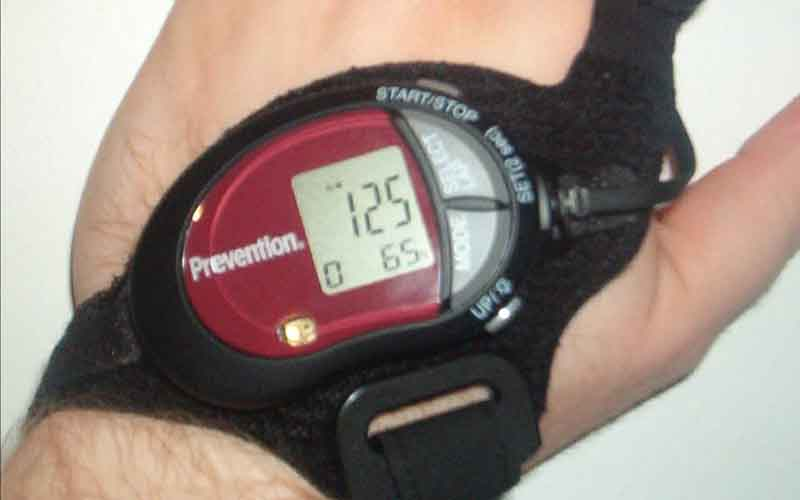
BioMon Sensor SFH 7050_word文档在线阅读与下载_免费文档 mianfeiwendang.com|959 × 1356 png|Image may be subject to copyright.









Researching | Near-navigation-grade interferometric fiber optic ... researching.cn|1000 × 775 jpeg|Image may be subject to copyright.
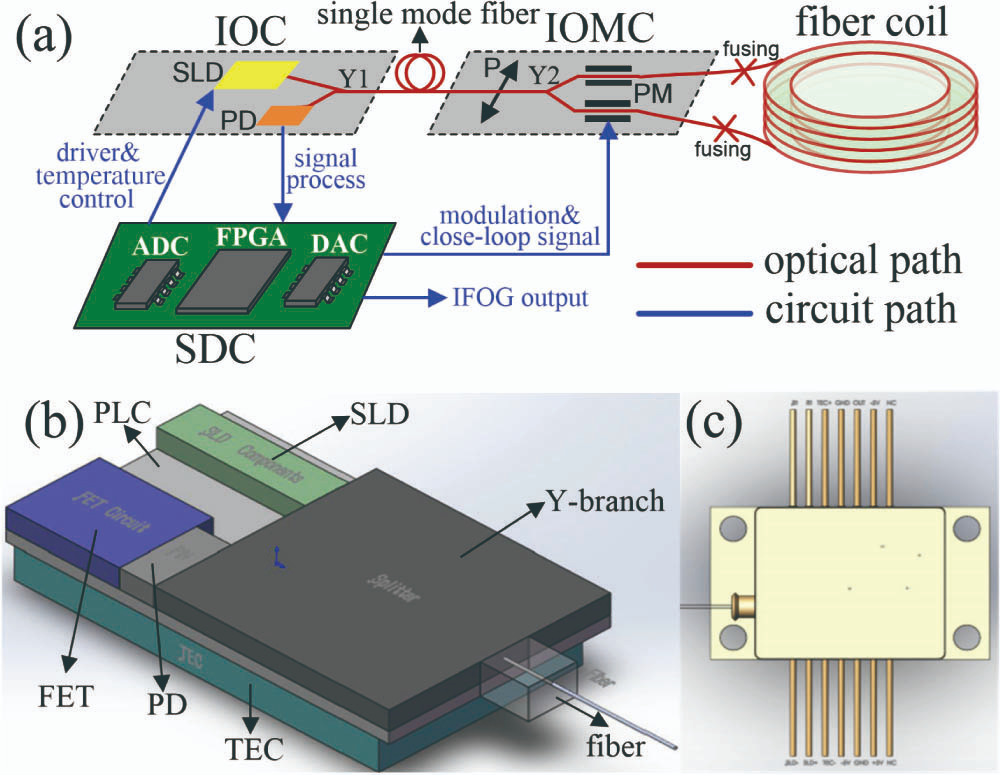
Sensors - Optical micropac.com|6000 × 4000 jpeg|Image may be subject to copyright.

Photodiode und Sensor ermöglichen Erfassung von Vitalwerten all-electronics.de|5616 × 3672 jpeg|Image may be subject to copyright.
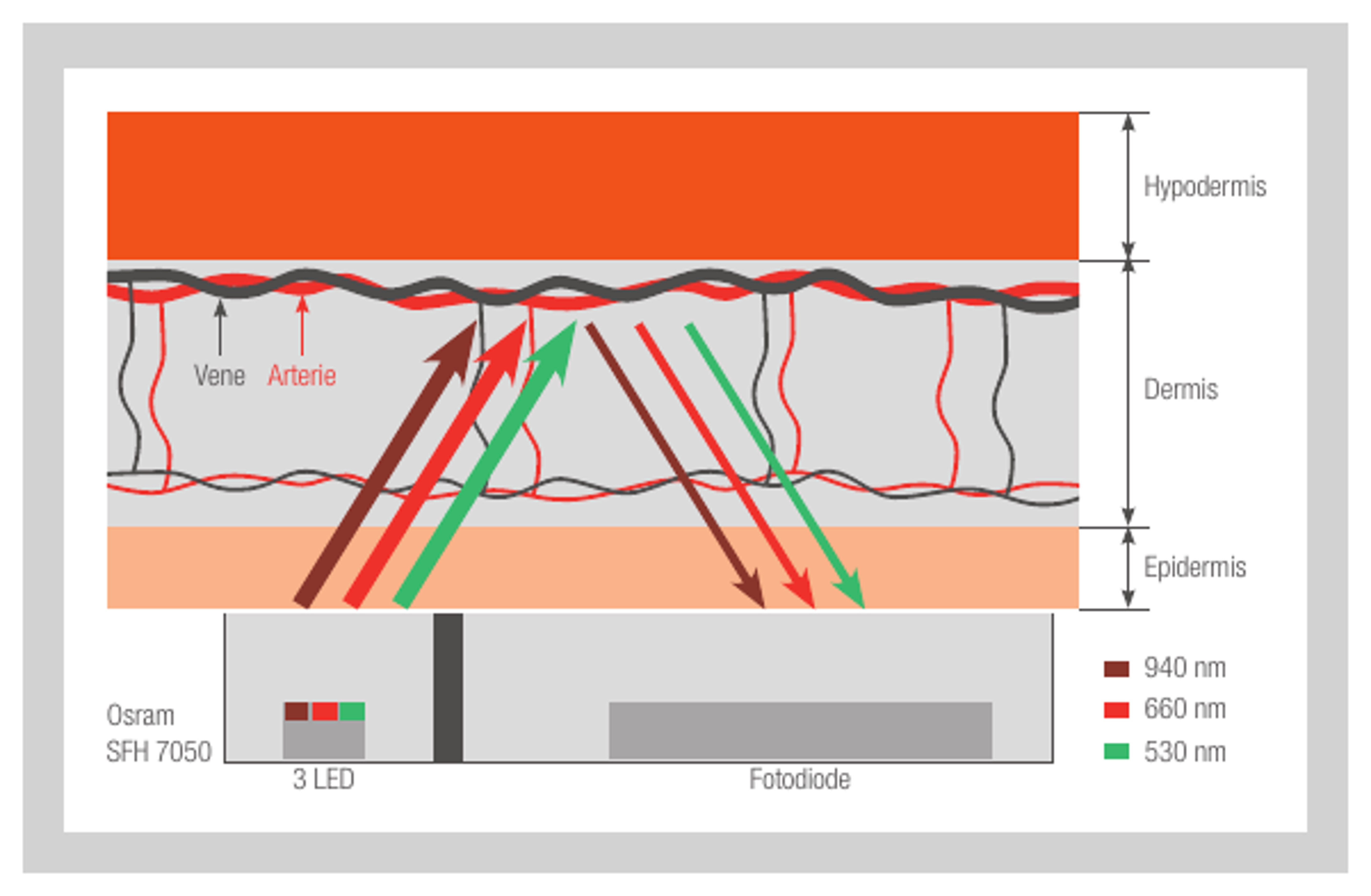
Osram SFH7051 Efficient sensor for wristband heart monitors - RUTRONIK-TEC rutronik-tec.com|1038 × 490 png|Image may be subject to copyright.
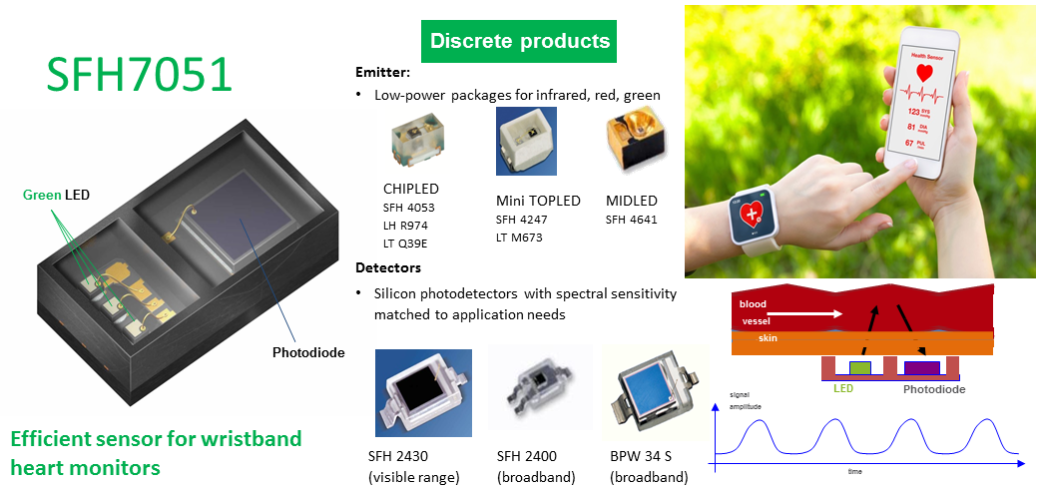
《生命线》 20200118 邱海波——生命的守门人
生如夏花,死若秋叶。
邱海波
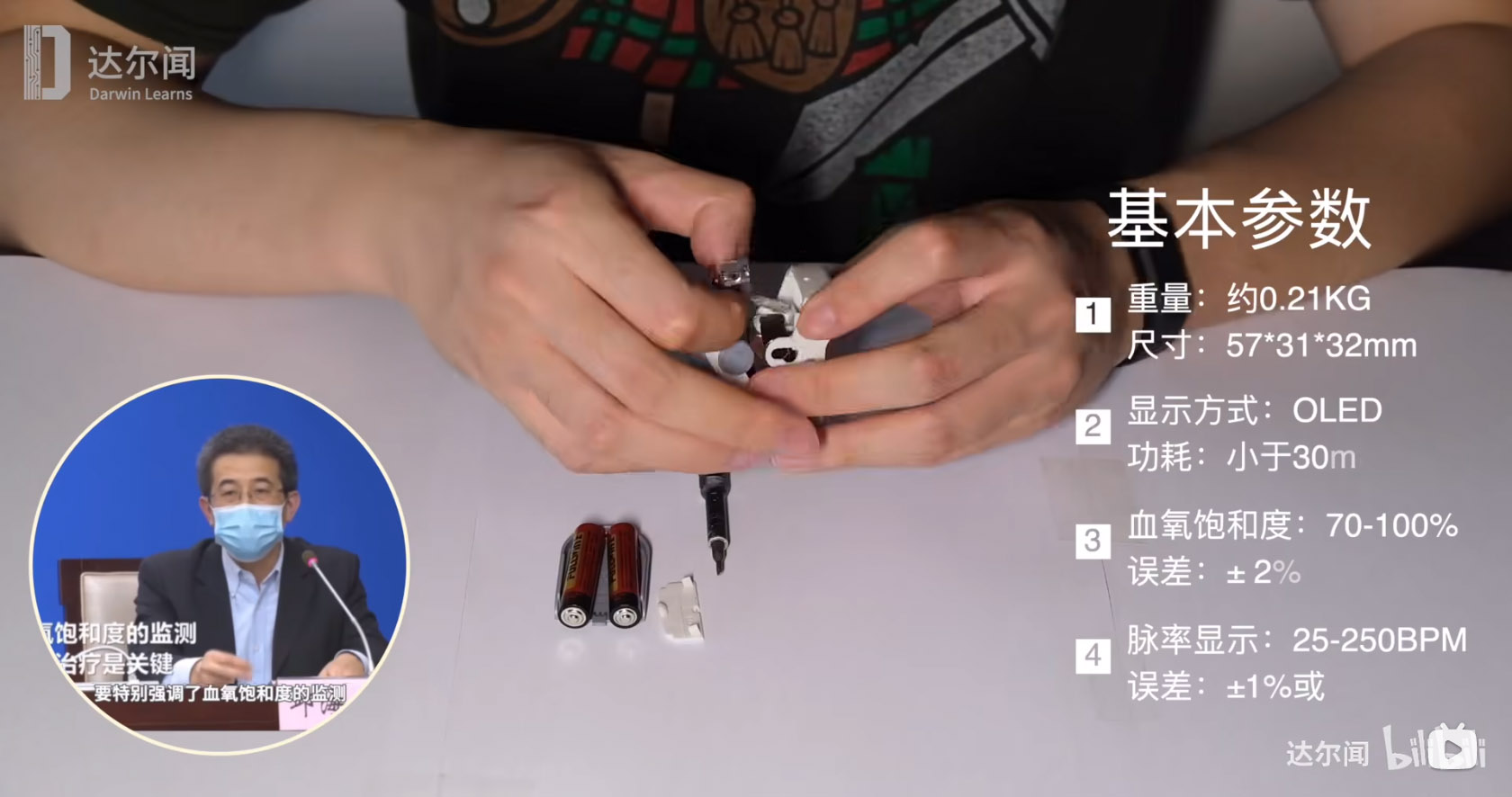
第五版的治疗规范里头,我们也特别强调了怎么去早期发现,这特别强调了需氧饱和度的,因为需氧饱和度的监测,有利于我们发现早期变动的表现。
国卫办疾控函〔2020〕156号 附件 :新型冠状病毒肺炎防控方案(第五版) 2020年2月21日
相关链接:
1.7万 | 10 | 2020-05-15 17:39:15
2分钟拆解解密爆红血氧仪,这款测量仪使用透射式PPG传感器。
部分芯片清单:
原创 妮mo 达尔闻说 2020-05-20 20:00

2527 | 2 | 2022-01-25 12:00:18
cingcing_bili | 2022-12-23 10:26 | 2
加上研发成本,总成本不超过20块
拆就完了 | 2022-12-23 21:48
这个确实比较便宜,所有功能都集成在一块芯片上了。

发布于 2018-08-29 10:23:53 Ryan Kraudel, 德州仪器
本文是主题为“用于生物计量可穿戴设备的光学心率传感器”三篇系列文章的第一篇。本篇着重介绍这些传感器系统的工作原理和通过它们可以测量什么。
大部分可穿戴设备采用光电容积脉搏波描记法(PPG)来测量心率及其他生物计量指标。PPG是一种将光照进皮肤并测量因血液流动而产生的光散射的方法。该方法非常简单,光学心率传感器基于以下工作原理:当血流动力发生变化时,例如血脉搏率(心率)或血容积(心输出量)发生变化时,进入人体的光会发生可预见的散射。下图1介绍了光学心率传感器的主要元件和基本工作原理。
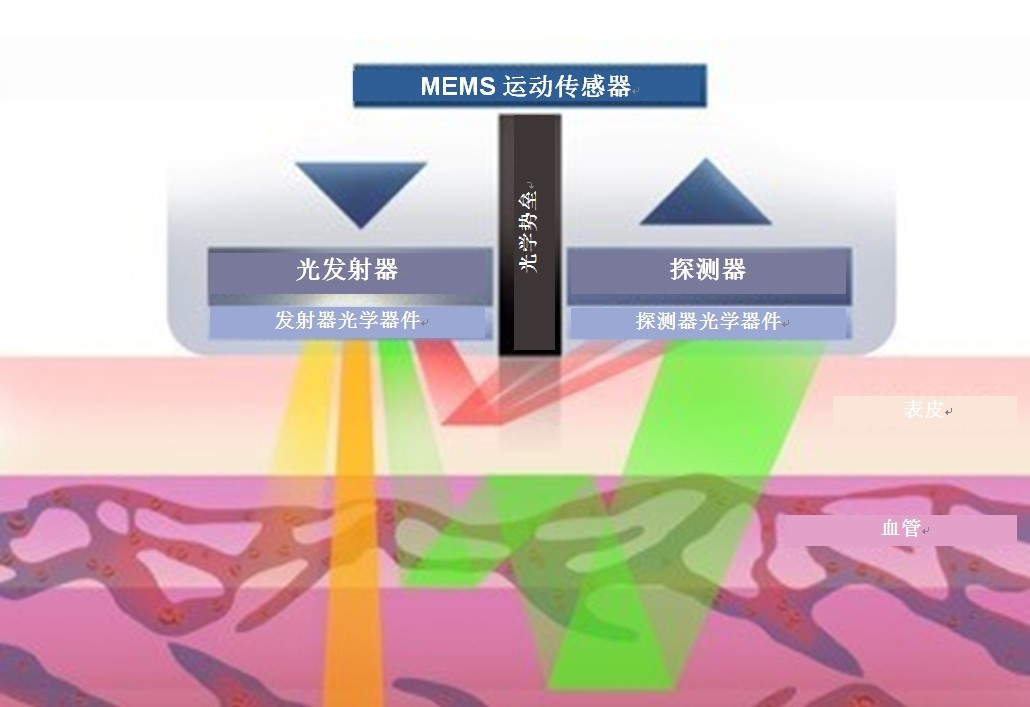
图 1:光学心率传感器的基本结构与运行
光学心率传感器使用四个主要技术元件来测量心率:
光发射器 - 通常至少由两个光发射二极管(LED)构成,它们会将光波照进皮肤内部。
光电二极管和模拟前端(AFE) - 这些元件捕获穿戴者折射的光,并将这些模拟信号转换成数字信号用于计算可实际应用的心率数据。
加速计 - 加速计可测量运动,与光信号结合运用,作为PPG算法的输入。
算法 - 算法能够处理来自AFE和加速计的信号,然后将处理后的信号叠加到PPG波形上,由此可生成持续的、运动容错心率数据和其他生物计量数据。
光学心率传感器可生成测量心率的PPG波形并将该心率数据作为基础生物计量值,但是利用PPG波形可以测量的对象远不止于此。尽管很难取得和维护精确的PPG测量结果(我们将在下一篇详细论述它),但是如果您能够成功获得精确的PPG测量结果,它将发挥强大的作用。高品质PPG信号是当今市场需求的大量生物计量的基础。图2是经过简化的PPG信号,该信号代表了多个生物计量的测量结果。
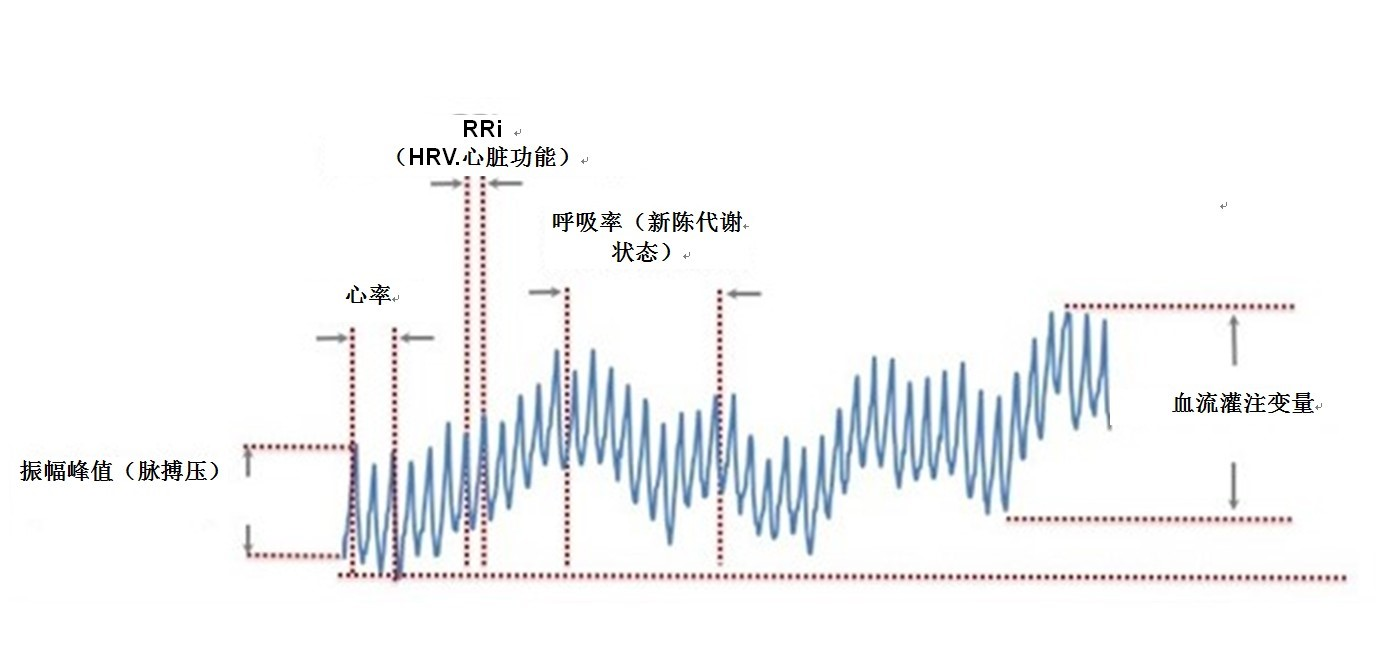
图 2:典型的PPG波形
下面我们进一步详细解读某些光学心率传感器可以测得的结果:
呼吸率 - 休息时的呼吸率越低,通常这表明身体状况越好。
最大摄氧量(VO2max)– VO2测量人体可以摄入的最大氧气量,是人们广泛使用的有氧耐力指标。
血氧水平(SpO2) - 是指血液中的氧气浓度。
R-R间期(心率变异率)- R-R间期是血脉冲的间隔时间;一般而言,心跳间隔时间越长越好。R-R间期分析,可用作压力水平和不同心脏问题的指标。
血压 - 通过PPG传感器信号,无需使用血压计即可测量血压。
血液灌注 - 灌注是指人体推动血液流经循环系统的能力,特别是在濒于死亡时流经全身毛细血管床的能力。因为PPG传感器可跟踪血液流动,所以可以测量血流相对灌注率及血液灌注水平的变化。
心效率 - 这是心脑血管健康和身体状况的另一个指标,一般来说,它测量的是心脏每搏的做功效率。
设计可穿戴设备上的光学心率传感器的难度很高,因为设计方法会受到人体运动的很大影响。为了弥补这一点,您需要强大的光力学和信号提取算法。图3说明了您在设计光学心率传感器时可能面临的部分主要挑战。
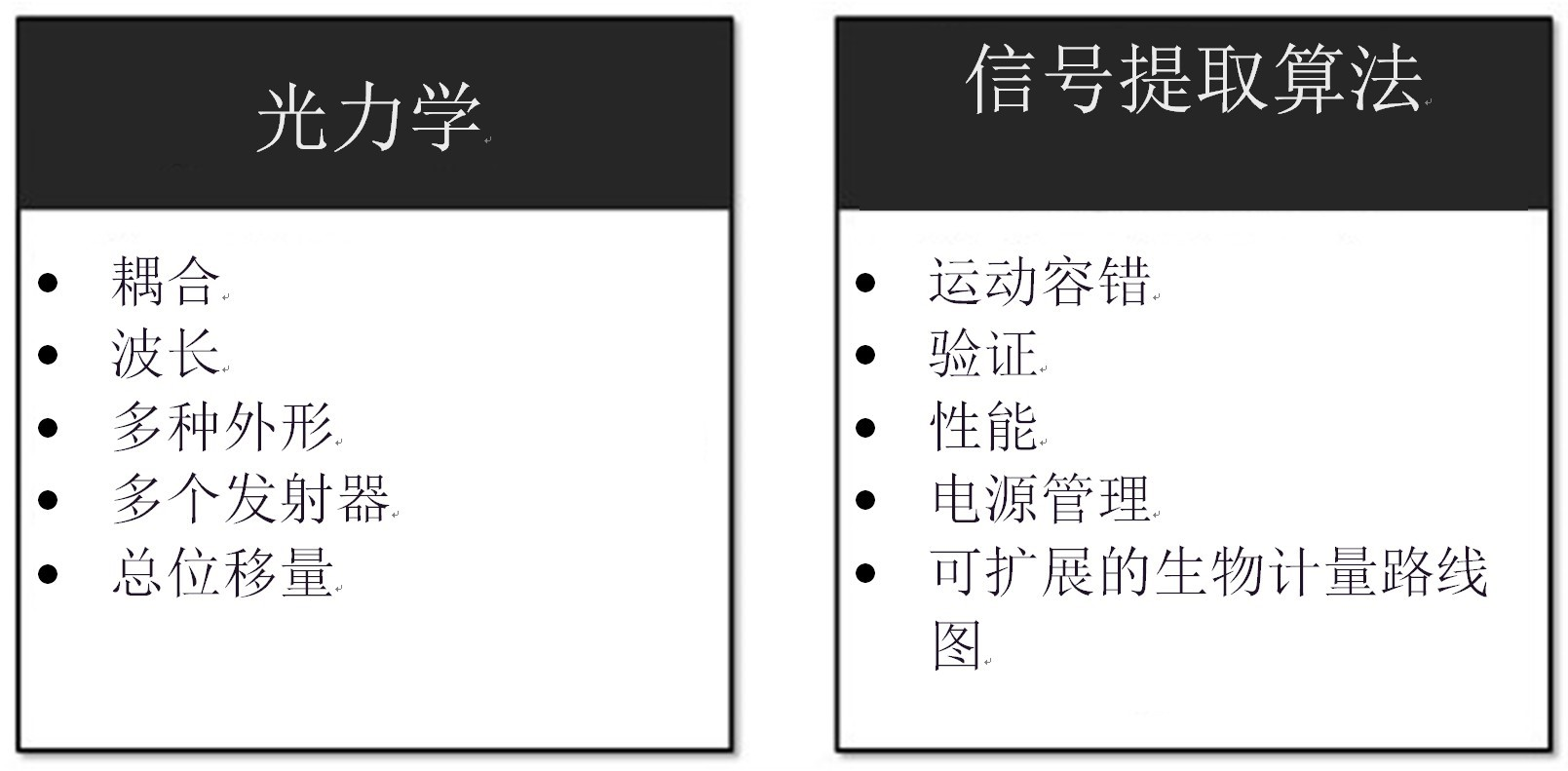
图 3:集成光学心率传感器的主要挑战
下面进一步介绍有关PPG传感器集成的光力学考虑事项:
光力学耦合 - 在传感器与人体之间是否能够高效进行双向光导与耦合?使血流信号最大化和向传感器施加噪音的环境噪音(如日光)最小化,是其中的关键。
是否为人体部位使用了正确的波长?不同部位需要不同的波长,因为各部位的生理构造不同,并且环境噪音对不同部位的影响不同。
设计是否使用了多个发射器,它们的间距是否正确?发射器的间距很重要,正确布放才能确保您测量到足够量的正确类型的血流,且测量结果具有较少的伪影。
在体育锻炼或身体运动过程中,诸如皮肤与传感器之间的位移量等机械力学作用是否最小?这对许多佩戴可穿戴设备进行活动的常见情况都是个问题,比如跑步、慢跑和健身房锻炼。
下面进一步介绍有关信号提取考虑事项的详细信息:
算法是否在多元化的人群中进行过验证?这一点很重要,只有进行过此类验证才能保证设备能够适应多种肤色、不同性别、不同体型和健康状况而正常运行。
算法是否有抵抗多种类型运动噪音的强健性?算法必须能够在各种活动期间正常工作,包括步行、跑步(高速稳定的跑步和间歇训练)、疾跑、健身房训练及打字或开车等日常行为。
算法是否能够持续改进,以便能够处理更多用例和新型生物计量?这种技术和可穿戴设备市场正在迅速发展,您必须不断创新,才可满足不断变化的客户需求。
我希望大家能够通过本篇博客了解一些有关PPG传感器系统工作原理及可测量内容的知识。本系列的下一篇博文将探讨将这种技术集成到各类设备(手表、健身手环和耳塞等)的最佳实践。
( “用于生物计量可穿戴设备的光学心率传感器”三篇系列文章第二篇:从50多个生物识别可穿戴产品开发周期得到的十大经验教训、第三篇:光学心率传感器技术在可穿戴设备中的新兴医疗应用 )
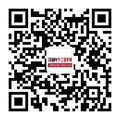
关注最前沿的电子设计资讯,请关注“电子工程专辑微信公众号”
发布于 2018-09-07 11:00:01 Ryan Kraudel,德州仪器
“用于生物计量可穿戴设备的光学心率传感器”三篇系列文章的第二篇。第一部分重点介绍了这些传感器系统的工作原理,以及如何使用它们进行测量。
设想一下,您正在参加一个计划会议。团队刚刚提出了一些非常棒的想法,他们为新的可穿戴设备设计了一种光学心率传感器,您可以将其添加到您的产品线中。他们都向您求助:我们应该与谁合作开发传感器系统? 突然间您意识到你并不完全确定从哪里着手。
我们参与了50多个生物识别可穿戴设备项目。 我们的技术应用到目前市场上20多种不同的生物识别可穿戴设备中。我们犯了一些错误,从这些经历中吸取了很多教训,并在此过程中取得了一些成功。以下是我们在整个过程中总结的十大经验教训,在为您的新一代可穿戴设备选择生物识别传感器系统时,您可以作为参考。
在您开始之前,要证明它是有效的。 这可能看起来非常明显,但任何将生物识别可穿戴设备推向市场的人都会告诉您,产品开发周期中最难的部分是让生物识别传感器系统能够很好地满足您的要求。您的起点应该是一个有效的参考设计,类似于图1中的设计。而且不要只在工作台上做测试。把它放在至少20个人身上,看看它与一个合法的基准设备相比是否适用于您的预期用例。另一种选择是测试市场上使用特定供应商技术的其他公司产品。他们的客户对性能感到满意吗?它在测试中的表现如何?
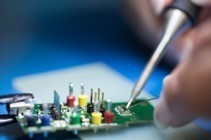
图 1:测试生物识别可穿戴设备的工作参考设计
与了解您的市场并可以满足您要求的技术供应商合作。 生物识别可穿戴设备的应用非常广泛。确保您的技术供应商具备在您想要开发的设备上的交付能力和经验。合适的外形、合理的指标、正确的精确度和良好的用户体验都对产品的成功起着巨大的作用。
与具备生物识别可穿戴设备和光机技术专业知识的技术供应商合作。 硬件元件和光学机械设计是精密生物识别可穿戴设备的关键要素。您选择的供应商应具备广泛的硬件和光机专业知识,并且应是评估用于信号处理的模拟前端(AFE)性能方面的专家,如TI AFE4410。他们应该了解光与身体之间的耦合情况,优化血流信号指示,并尽量减少环境噪音。一个强大的团队将确保选定的设备主体位置和外形使用正确的波长。
先进的信号提取方法至关重要。 由于单个主体的复杂性,所有技术开发人员都必须对信号提取算法有深入的了解,特别是有源信号表征(如图2所示),它可以识别表征可能破坏信号的运动和环境噪声。隔离这些因素和其他因素,使生物识别传感器系统能够报告准确的数据。
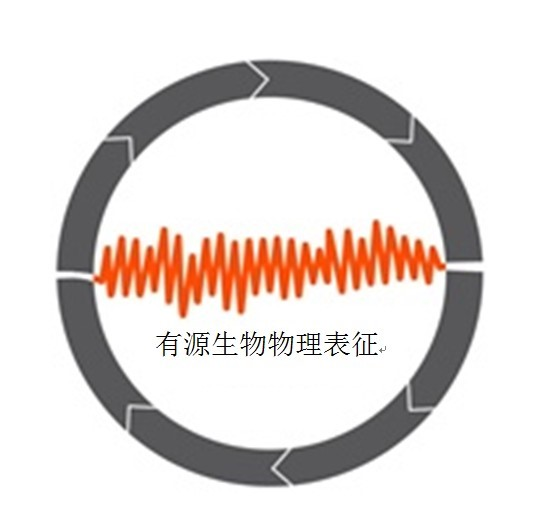
图 2:涉及有源信号表征的信号处理至关重要
需要高级生物识别测量技术。 基本心率测量正迅速成为可穿戴设备的最低要求。更高级的指标将定义未来,因此请仔细查看可从系统获得的指标。它是否支持连续心率或只是定期进行现场测量?它能否提供更高级的指标,如心跳频率间隔(心率变异性[HRV])、呼吸频率或血压? 也许更重要的是,供应商能否向您证明他们能够提供这些指标? 事实往往胜于雄辩。
与能够正确测试产品的技术供应商合作。 当您与供应商合作开发产品的核心组件时,不仅要了解他们如何测试自己的产品,还要了解他们如何在您的设备中测试他们的产品。如果他们提供原型测试服务,那么您的方向就是正确的。但是,请务必询问他们是否可以测试您的希望的用例,如图3所示。他们如何以及在何处进行测试?他们在每轮原型设计中测试了多少人?
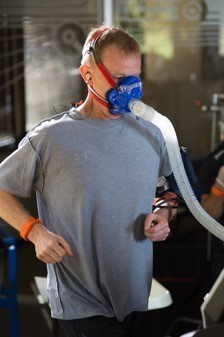
图 3:确保在预期的用例上对设备进行广泛的测试。
寻找将生物识别可穿戴设备推向市场的成熟经验。 重要的是要了解市场上还有哪些产品(包括您的产品)正在使用您所关注的技术。分析消费者对这些设备的评论可以让您深入了解该组件在您设备中的工作方式。这些产品有多精确? 产品评价是否正面——至少与心率监测和生物识别组件有关?
选择具有多学科专业知识的团队。 您应该了解供应商团队的技能和专业知识。他们专攻硬件吗? 光学?固件?算法?他们的核心竞争力是什么?
制造合作伙伴的经验是非常宝贵的。 与典型的可穿戴设备相比,设计生物识别可穿戴设备是一个截然不同的项目,主要是因为它其涉及光机械技术。即使您之前设计并制作了活动跟踪可穿戴设备,也不要低估添加光学生物识别技术的复杂性。您应该选择具有大规模生产生物识别可穿戴设备经验的制造商。他们将面临并解决许多其他制造商所没有遇到的未知挑战。
评估知识产权(IP)领域 。尽管这是一个相对较新的领域,但生物识别可穿戴设备领域存在大量的专利,而也曾有知名公司也在这一领域发起诉讼。生物识别可穿戴设备的IP领域包括视光机械设计、数据处理、数据评估和可穿戴数据可视化等领域。图4显示了可穿戴设备专利授予的最新趋势。

图 4:可穿戴设备专利授权和提交(图片由ipwatchdog.com提供)
希望这能帮助您选择合适的生物识别传感器系统。本系列的下一部分将介绍不同的设备和生物识别传感器系统用例。
( “用于生物计量可穿戴设备的光学心率传感器”三篇系列文章第一篇:用于生物计量可穿戴设备的光学心率传感器、第三篇:光学心率传感器技术在可穿戴设备中的新兴医疗应用 )
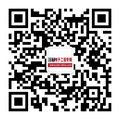
关注最前沿的电子设计资讯,请关注“电子工程专辑微信公众号”
发布于 2018-09-30 03:13:30 Ryan Kraudel,德州仪器
在日益数字化的世界中,光学心率传感器在可穿戴设备中的应用越来越广泛。这些设备中数不清的应用可提供从个人活动、健身水平到健康状况的所有内容。精准的生物识别传感器数据可以提供准确的健身/健康评估,但设计师和工程师究竟能用这些评估做些什么呢?
“用于生物计量可穿戴设备的光学心率传感器”系列文章由三个部分组成,这是第三篇。第一部分重点介绍了这些传感器系统的工作原理,以及如何使用它们进行测量。第二部分分享了完成50多个生物识别可穿戴产品开发周期的十大经验教训。
在日益数字化的世界中,光学心率传感器在可穿戴设备中的应用越来越广泛。这些设备中数不清的应用可提供从个人活动、健身水平到健康状况的所有内容。精准的生物识别传感器数据可以提供准确的健身/健康评估,但设计师和工程师究竟能用这些评估做些什么呢?表1总结了目前在健身应用中使用的一些常见评估,这些评估也证明了健康医疗的意义。

表1:与健康和医疗相关的关键健康评估(信息由美国国立卫生研究院提供)
如今,市场上的大多数可穿戴设备都是针对运动和健身用例推出的,但可以开始看到可穿戴设备正转变为个人健康设备,为人们的健康提供有意义的指导。这是因为这些可穿戴设备中的光电容积描记(PPG)传感器已经达到了一定的精确度,足以满足许多已被心电图技术证实的健康和医疗用例。
以下是一些如何使用这些评估以及如何在未来将其应用于健康和医疗可穿戴设备的示例。
测量身体活动和与之有关的身体反应是决定改善水平的关键因素。今天的一些可穿戴设备开始使用VO2max(最大耗氧量)来测量心血管健康的慢性变化。最大摄氧量越高,有氧运动中的表现越好。然而,具有测量最大摄氧量功能的可穿戴设备也可应用于健康和医疗用途。例如,证据表明,较高的最大摄氧量也与死亡风险降低和心脏病恢复能力提高有关。
“休息”一词可能不是人们在考虑健身时首先想到的词,但心率的静息测量可以很好地反映健康水平。在不运动的时候,静息心率的下降与健身的增多有关。一个人的静息心率越低,他就越有可能减缓心血管疾病的进展。
同样地,测量心率恢复——心脏在运动后恢复到正常水平的能力——也可以预测健康水平和心脏功能。健康的心脏会比不健康的心脏恢复得快。心率恢复率越高表明耐力越好,心血管健康状况越好。为了评估心率恢复情况,您可以观察运动过程中的心率和停止运动后一到两分钟的心率之间的差异。
另一个有用的评估来自心率传感器,大约在运动一分钟后,是心率对运动的反应,这是一种生理反应。工作肌肉活动增加导致交感神经系统活动增加。健康水平越低,心率对运动的反应越强。通过定期训练,身体会适应。虽然心率仍会随着运动而增加,但身体必须更加努力地运动才能达到同样的速度。较高的心率反应,再加上变时功能不全,也有助于预测颈动脉疾病。
有规律的锻炼也能提高心脏效率,这是心脏所做的工作与完成工作所需的能量之比。心脏效率越高,对于身体活动需要的跳动次数就越少。心脏效率是一个主要的心脏健康指标。心率下降与许多心血管疾病相关,包括高血压。
身体活动或身体上的压力,也可以通过HRV来评估心脏搏动之间的时间变化。该测量可以表明心理社会或精神压力,以及过度锻炼。HRV监测压力源对身体的影响,它与疲劳(精神和工作能力)和执行脑力和工作任务的准备程度有关。HRV还可以预测心律失常和房颤的发生率。职业运动员使用HRV已经有一段时间了,但现在只是刚刚开始在消费性设备上流行。
最近发布了许多关于可穿戴设备检测房颤、心律失常、核心体温等新功能的公告。这些功能由同样的光学心率传感器提供,其使用的PPG已经应用于当今大量的可穿戴设备中。
( “用于生物计量可穿戴设备的光学心率传感器”三篇系列文章第一篇:用于生物计量可穿戴设备的光学心率传感器、第二篇:从50多个生物识别可穿戴产品开发周期得到的十大经验教训 )

关注最前沿的电子设计资讯,请关注“电子工程专辑微信公众号”

Ryan Kraudel 2018-05-03
This is the first in a three-part series on optical heart rate sensors for biometric wearables. This first installment focuses on how these sensor systems work and what you can measure with them.
Most wearables use photoplethysmography (PPG) to measure heart rate and other biometrics. PPG is the methodology of shining light into the skin and measuring the amount that scatters based on blood flow. That’s an oversimplification, but optical heart-rate sensors work based on the fact that light entering the body will scatter predictably as the blood-flow dynamics change, such as with changes in blood pulse rates (heart rate) or changes in blood volume (cardiac output). Figure 1 below depicts the primary components and basic working methodology of an optical heart rate sensor.
Figure 1: Optical heart rate sensor’s basic structure and operation
Optical heart-rate sensors use four primary technical components to measure heart rate:
What can an optical heart-rate sensor measure?
Optical heart-rate sensors produce a PPG waveform that can measure heart rate as a foundational metric, but there’s much more that can be measured from a PPG waveform. Although it is very difficult to achieve and maintain accurate PPG measurements (more on that in the next section), when you do get it right, it can be very powerful. A high-quality PPG signal is foundational to a wealth of biometrics that the marketplace is demanding today. Figure 2 is a simplified PPG signal marking the measurement of several biometrics within that signal.
Figure 2: Typical PPG waveform
Here’s further detail on some of the measurements possible with optical heart rate sensors:
Optical Heart Rate Sensor Challenges
Designing an optical heart-rate sensor can be very challenging on a wearable device, because the methodology is sensitive to motion. To compensate, you need to have strong optomechanics and signal-extraction algorithms. Figure 3 shows some of the primary challenges you might face when designing with optical heart rate sensors.
Figure 3: Primary challenges when integrating optical heart rate sensors
Optomechanics
Here’s further detail on the optomechanical considerations for PPG sensor integration:
Signal-extraction algorithms
Here’s further detail on the signal-extraction considerations for PPG sensor integration:
I hope this post provided some insight on how PPG sensor systems operate and what they can measure. In the next post in this series, I’ll explore best practices in integrating this technology into devices of all kinds – watches, fitness bands, earbuds and more.
Additional resources
Ryan Kraudel 2018-05-21
This is the second in a three-part series on optical heart rate sensors for biometric wearables. The first installment focused on how these sensor systems work and what you can measure with them.
You’re sitting in a planning meeting. The team has just come up with some pretty amazing ideas for the new wearable device with an optical heart rate sensor that you’re adding to your product line. They all turn to you: Who should we partner with for the sensor system? Suddenly you realize that you’re not entirely sure where to begin.
At Valencell, we’ve heard this before — many times, having been involved in more than 50 biometric wearable projects. Valencell uses the AFE4410 in its next-generation Benchmark sensor system and our technology is integrated into more than 20 different biometric wearable devices on the market today. We’ve made some mistakes, learned a lot from those experiences and had some successes along the way. Here are the top 10 lessons we’ve learned throughout the process that you should consider when selecting a biometric sensor system for your next wearable.
1. Get proof that it works before you get started. This might seem pretty obvious, but anyone who has brought a biometric wearable to market will tell you the hardest part of the product development cycle is getting the biometric sensor system to work well enough to meet your requirements. Your starting point should be a working reference design, similar to the one in Figure 1. And don’t just test it on the bench. Put it on at least 20 people and see if it works in your intended use case, compared to a legitimate benchmark device. Another option is to test other companies’ products in the market that are using a particular vendor’s technology. Are their customers pleased with the performance? How does it perform in your tests?
Figure 1: Test a working reference design for biometric wearables
2. Work with a technology provider that knows your market and can support your requirements. Applications for biometric wearables are broad. Make sure your technology provider has the capabilities and experience to deliver on the device you want to build. The right form factor, the right metrics, the right levels of accuracy and the right user experience all play huge roles in a product’s success.
3. Work with a technology provider that has expertise in biometric wearables and optomechanics. Hardware components and optomechanical design are critical factors in accurate biometric wearables. The provider you select should have extensive hardware and optomechanical expertise, and should be experts in evaluating the performance of analog front ends (AFEs) for signal processing, like the TI AFE4410. They should understand how light couples to and from the body to optimize the signals indicating blood flow and minimize environmental noise. A strong team will be sure that the right wavelengths are being used for the chosen device body location and form factor.
4. Advanced signal-extraction methodologies are critically important. Because of the complexities in individual bodies, it’s critical for all technology developers to have a keen understanding of signal extraction algorithms, particularly something called active signal characterization (shown in Figure 2), which identifies and characterizes both motion and environmental noise that can corrupt signals. Isolating these factors, and others, enables the biometric sensor system to report accurate data.
Figure 2: Signal processing involving active signal characterization is critical
5. Advanced biometric measurements are required. Basic heart rate measurement is quickly becoming a minimum requirement for wearables. More advanced metrics will define the future, so take a serious look at what metrics you can get from the system. Does it support continuous heart rate or just take spot measurements periodically? Can it deliver more advanced metrics like beat-to-beat (RR) interval (heart rate variability [HRV]), breathing rate or blood pressure? And, perhaps more importantly, can the vendor prove to you that they can deliver those metrics? Actions speak louder than words.
6. Work with a technology provider who can test your product appropriately. When you partner with vendors for core components of your product, it’s important to know not only how they test their own work, but also how they test their product within your device. If they offer prototype testing services, you’re heading in the right direction. But be sure to ask if they can test your intended use cases, shown in Figure 3. How and where do they conduct that testing? How many people do they test in each round of prototyping?
Figure 3: Ensure you test the device extensively on the intended use case.
7. Look for proven experience in getting biometric wearables to market. It’s critical to understand what other products on the market are using the tech you’re looking at including in your product. Analyzing consumer reviews of those devices can give you critical insight into how that component will work in your device. How accurate are those products? Are the product reviews positive — at least as they pertain to the heart rate monitoring and biometrics component?
8. Choose a team with multi-disciplinary expertise. You should get an understanding of the skills and expertise of the vendor’s team. Do they specialize in hardware? Optics? Firmware? Algorithms? What are their core competencies?
9. Manufacturing partner experience is highly valuable. Building a biometric wearable is a substantially different project than a typical wearable product, primarily because of the optomechanics involved. Even if you’ve designed and built activity tracking wearables before, don’t underestimate the complexity of adding optical biometrics. You should choose a contract manufacturer that has experience building biometric wearables at scale. They will have faced and solved many unforeseen challenges that other manufacturers have not.
10. Evaluate the intellectual property (IP) landscape. Despite being a relatively new space, there is an extensive patent landscape in biometric wearables and high-profile companies are litigating in this space. The IP landscape for biometric wearables includes areas such as optomechanical designs, data processing, data assessments and visualization of wearable data. Figure 4 highlights the recent trends in wearables patents granted.
Figure 4: Wearables patents granted and submitted (photo courtesy of ipwatchdog.com)
I hope this helps you select the right biometric sensor system. The next installment in this series will cover different devices and biometric sensor system use cases.
Additional resources
Ryan Kraudel 2018-06-25
This is the third installment in a three-part series on optical heart rate sensors for biometric wearables. The first installment focused on how these sensor systems work and what you can measure with them. Part 2 shared the top 10 lessons learned from Valencell’s completion of more than 50 biometric wearable product development cycles.
In an increasingly digital world, there are more and more uses for optical heart rate sensors in wearable devices. These devices have endless applications and provide insights on everything from personal activity and fitness levels to health status. Accurate biometric sensor data can lead to accurate fitness and health assessments, but what exactly can designers and engineers do with these assessments? Table 1 summarizes some of the common assessments used today in fitness applications, which also have validated health and medical implications.
|
Assessment |
Definition |
What it means for fitness |
What it means for health |
|
VO2 max |
Aerobic capacity: the primary measure of chronic change to cardiovascular fitness |
Higher VO2 max correlates with better performance during aerobic activities |
Higher VO2 max correlates with lower mortality and improved recovery from a cardiac event |
|
Resting heart rate |
Heart rate during an awake period of no exertion |
A decrease in resting heart rate correlates with an increase in fitness |
A steadily increasing resting heart rate correlates with the progression of cardiovascular disease |
|
Heart rate recovery |
Change in heart rate over one minute after intense exercise |
Higher heart rate recovery implies better exercise endurance |
Higher heart rate recovery implies better cardiovascular health |
|
Heart rate response |
Change in heart rate over one minute at the start of exercise |
Higher heart rate response can imply low cardiac readiness for exercise |
Higher heart rate response paired with chronotropic incompetence, the inability of the heart to increase its rate commensurate with increased activity or demand, can predict carotid atherosclerosis |
|
Cardiac efficiency |
Average cadence divided by average heart rate at steady state |
The higher cardiac efficiency, the fewer heart beats needed for all physical activities |
Steadily declining cardiac efficiency correlates with the onset of hypertension |
|
Heart rate variability (HRV) |
The statistical variability of heart rate intervals |
HRV can diagnose psychosocial stress and overtraining in exercise |
HRV can predict atrial fibrillation and arrhythmia |
Table 1: Key fitness assessments with health and medical relevance
(Info courtesy of the National Institutes of Health and Pacing and Clinical Electrophysiology)
Most wearables in the market today are targeted toward sports & fitness use cases, but you are beginning to see a shift toward wearables becoming personal health devices that can provide meaningful insights into a person’s health. This is because the photoplethysmogram (PPG) sensors in these wearables devices have achieved a level of accuracy that is good enough for many of the health and medical use cases that have already been proven with electrocardiography technology.
Here are some examples of how these assessments are used today and how they could be used in health and medical wearables in the future.
VO₂ max
Measurements of physical activity and the body’s response to it are critical components in determining the improvement level. Some wearable devices today are starting to use VO₂ max (maximum oxygen consumption) to measure chronic changes to cardiovascular fitness. The higher the VO₂ max, the better the performance during aerobic activity. However, wearable devices measuring VO2 max could also be used for health and medical purposes. For example, it has been shown that a higher VO₂ max is also associated with a lowered risk of mortality and an increased ability to recover from a cardiac event.
Resting heart rate
The term “rest” may not be the first thing that comes to mind when thinking about fitness, but resting measurements of heart rate can be great indicators of fitness levels. Decreased resting heart rate during periods of no exertion correlates to increased fitness. The more someone can lower their resting heart rate, the more likely they are to slow the progression of cardiovascular disease.
Heart rate recovery
Similarly, measuring heart rate recovery — the heart’s ability to return to normal levels after physical activity — can also predict fitness levels and heart function. A healthy heart will recover at a quicker rate than a less healthy one. A higher heart rate recovery suggests increased endurance and better cardiovascular health. To evaluate heart rate recovery, you look at the difference between the heart rate during activity and the heart rate one to two minutes after stopping exercise.
Heart rate response
Another useful assessment from a heart rate sensor, taken about a minute into a workout, is heart rate response to exercise, which is physiological. Increased activity in working muscles causes an increase in sympathetic nervous system activity. The lower the fitness level, the stronger the heart rate response to exercise. With regular training, the body adapts. While heart rates will still increase with exercise, the body has to work harder to achieve the same rate increase. A higher heart rate response, paired with chronotropic incompetence, can also help predict carotid artery disease.
Cardiac efficiency
Regular exercise also can lead to higher cardiac efficiency, which is the ratio of work done by the heart to the energy used to perform the work. The more efficient the heart becomes, the fewer beats it needs for physical activity. Cardiac efficiency can be a great heart-health indicator. A declining heart rate efficiency is correlated with many cardiovascular issues, including hypertension.
HRV
Physical activity, or stress on the body, can also be assessed using HRV – the variability of time between beats of the heart. This measurement indicates psychosocial or mental stress, as well as overtraining in exercise. HRV monitors the impact of stressors on the body, and it relates to fatigue (mental and work capacity) and readiness to perform mental and work tasks. HRV can also predict incidences of arrhythmia and atrial fibrillation. Professional athletes have used HRV for some time, but it’s just now beginning to see traction in consumer devices.
<iframe type="text/html" src="//www.youtube.com/embed/MTISElwE6WA" frameborder="0" width="800" height="481" allowfullscreen=""></iframe>
For more information on how to measure HRV and what it can indicate, check out this Heart Rate Variability Review
by Dr. Chris Eschbach, director of Valencell’s Biometrics Lab.
There have been many recent announcements about wearable devices’ new capabilities to detect atrial fibrillation, arrhythmia, core body temperature and more. These capabilities are being delivered by the same optical heart rate sensors using PPG already found in a great deal of wearable devices today. In many ways, we’re just scratching the surface of possibilities.
Additional resources
Valencell Blood Pressure Demonstration
What is Heart Rate Variability?
此处可能存在不合适展示的内容,页面不予展示。您可通过相关编辑功能自查并修改。
如您确认内容无涉及 不当用语 / 纯广告导流 / 暴力 / 低俗色情 / 侵权 / 盗版 / 虚假 / 无价值内容或违法国家有关法律法规的内容,可点击提交进行申诉,我们将尽快为您处理。